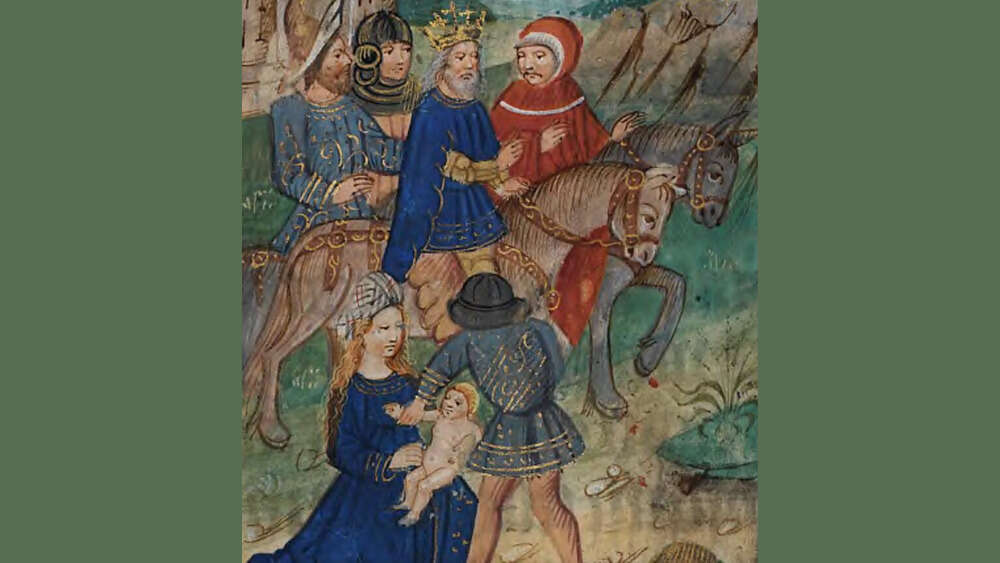Today is 'Childermas' – Holy Innocents Day
Origins, traditions and controversies over the Fourth Day of Christmas
Today is Day Four of the ‘Twelve Days of Christmas‘ and means some western Catholic and Orthodox churches will be celebrating Childermas today (December 28), with other eastern churches following tomorrow (December 29).
So what is Childermas?
Childermas – also known as the Feast of the Holy Innocents and Innocents’ Day – is a Christian feast held in remembrance of the massacre of young children in Bethlehem by King Herod the Great, who was attempting to kill the infant Jesus.
The biblical story is told in Matthew 2.16-18:
When Herod realised that he had been outwitted by the Magi, he was furious, and he gave orders to kill all the boys in Bethlehem and its vicinity who were two years old and under, in accordance with the time he had learned from the Magi. Then what was said through the prophet Jeremiah was fulfilled:
“A voice is heard in Ramah,
weeping and great mourning,
Rachel weeping for her children
and refusing to be comforted,
because they are no more.”
According to Christian tradition, these children are regarded as the first Christian martyrs. So, one of the traditions of Childermas is for mothers to wear purple to recall the grief of those Bethlehem mothers all those years ago.
Other traditions, though, are more focused on celebrating the blessing of children. So, some church services feature children in the choirs of mass – hence the name “Childermas” or Children’s Mass. Some parents will also bless their children by making the sign of the cross on their child’s forehead and saying: “May God bless you, and may He be the Guardian of your heart and mind — the Father, and Son, and Holy Spirit. Amen.”
Despite Childermas clearly playing an important role in some Christian traditions today, the evidence of its earliest origins is more complex.
The first account of Childermas being commemorated as a feast is found in the Leonine sacramentary, which dates to around 485. A sacramentary is a book used for liturgical services and Mass by a priest. The Leonine sacramentary is a manuscript was found in the library of the cathedral chapter of Verona, which was published by Joseph Bianchini in 1735, and was by him attributed (arbitrarily) to Pope Leo I, who held the papacy from 440-61.
These earliest commemorations were generally connected with the Feast of the Epiphany, 6 January. Prudentius (348 – c. 413/405) – the Roman Christian poet who was born Aurelius Prudentius Clemens in the Roman province of Tarraconensis – mentions the Innocents in his hymn on the Epiphany.
First to die for Christ—sweet lambs,
At the very altar ye,
With your fatal crowns and palms,
Sport in your simplicity.
Yet is Herod’s wrath in vain,
Though a thousand babes he slay;
Christ, amid a thousand slain,
Is in safety borne away.
But it is the biblical story of King Herod’s murderous act itself that is disputed by scholars. This is chiefly because the historian Josephus does not mention it – which is unexpected.
Josephus, who wrote more than two whole books (scrolls) on the life of Herod the Great, has actually provided historians with more primary source material for Herod than any other ancient figure.
And he’s not biased towards painting a rosy picture of the Great King.
In contrast, Josephus describes disturbing accounts of attempted poisoning between sons as they jostled to succeed Herod, along with Herod putting to death his favourite wife (he had ten!), his mother-in-law, several uncles and even drowning the High Priest.
So why would a historian like Josephus pull his punches about Herod’s murder of children if it really happened?
But it is the biblical story of King Herod’s murderous act itself that is disputed by scholars
John Piper put this exact question to historian Dr Paul L. Maier on his podcast back in 2015. Maier – who was the Russell H. Seibert Professor of Ancient History at Western Michigan University until his retirement and has written many books on related subjects – told Piper it was “interesting” that Josephus did not mention it. But, he explained, for biblical critics to “pounce on that aspect of the nativity account and say therefore it didn’t happen” was “an argument from silence and that is the weakest form of argumentation you can use.”.
“As we say in the profession, absence of evidence is not evidence of absence,” Maier said.
“In this case one or two things could have happened. Josephus may have heard about it and not used it because you don’t have hundreds of babies killed or you have only about 12, as a matter of fact, 12 or 15. The infant mortality in the ancient world was so huge anyway that this is really not going to impress the reader too much, believe it or not. And I think if Josephus is choosing between the two stories about how Herod died right before his death, I think I would take the one where he is going to slaughter hundreds of Jewish leaders,” Maier said.
“Or he may not have heard about it. Again, simply because in little Bethlehem it doesn’t amount to much — a village of about 1,500 residents. In my actuarial study, Bethlehem at the time wouldn’t have had more than about two dozen babies two years old and under — half of them female. And so this is not a big deal, and I think that is why Josephus either never heard about it or didn’t feel it important enough to record. “
Email This Story
Why not send this to a friend?



